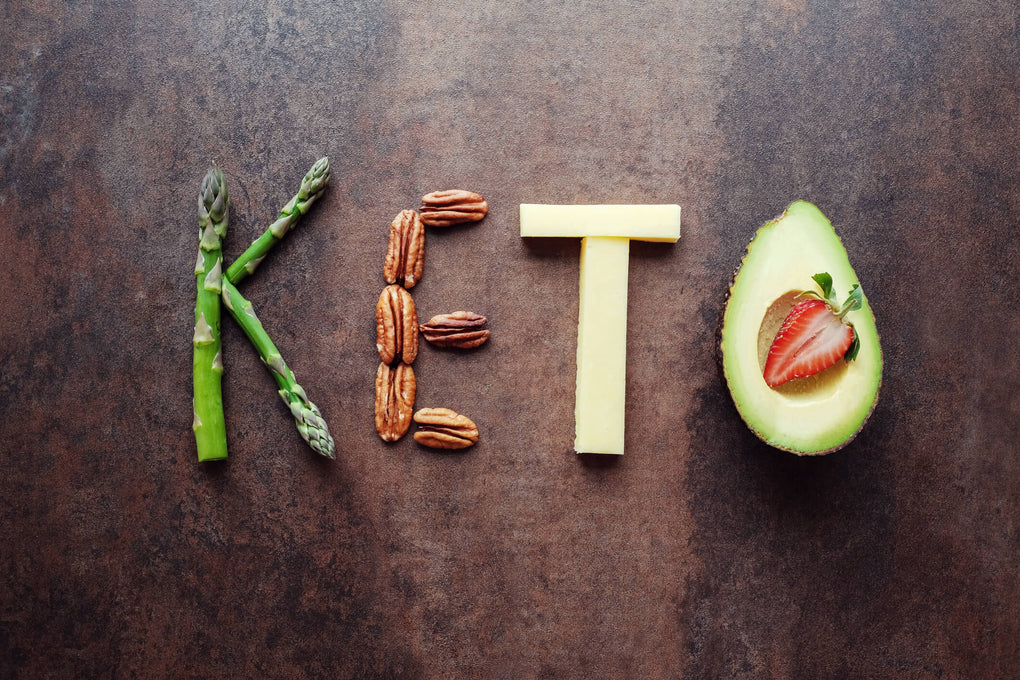A Beginner's Guide to: The Keto Diet
25th January 2019 / Health
A Beginner's Guide to: The Keto Diet
Zoe Milkowski

First things first, what does “keto” actually mean? Going “Keto” refers to the transition of the body into a state of ketosis, which can be defined as a particular metabolic state whereby the body’s main energy supply comes from a characteristically high level of ketones in the blood. This is in contrast to glycolysis where the blood glucose proves the body’s energy. Ketones are the chemicals produced when fats are broken down for energy. Therefore, high levels of ketones in the body suggest that there is a high rate of fat being broken down for energy; this is the principle of the ketogenic diet.
The diet
The ketogenic diet is a low-carbohydrate, high-fat diet with numerous potential health benefits. The main claimed benefit is that it helps speed up weight loss. The basis of the diet involves drastically reducing your carbohydrate intake, replacing your usual carb-based calorie intake with fats and thus forcing your body to enter into ketosis. As a consequence, your body becomes more efficient at burning fat for energy, rather than carbohydrate stores. A low carb diet also leads to a lower production of insulin (the hormone responsible for regulating the amount of glucose in the blood) which in turn allows your body to more readily convert fat stores to energy.
The benefits
As well as inducing the potential for weight loss, the ketosis state causes fat to be turned into ketones in the liver which supply the brain with energy. Furthermore, due to the restricted carbohydrate intake ketogenic diets can cause reduced blood sugar levels, which can be particularly beneficial for numerous metabolic, neurological and insulin-related health conditions such as diabetes.
So, what does a typical day on the ketogenic diet look like?
Breakfast: Avocado and tomato omelette
Lunch: Chicken salad with olive oil and feta cheese
Dinner: Salmon with asparagus
Snack: A handful of nuts and celery sticks with salsa dip
There are several different versions of the ketogenic diet, the most common one being the standard ketogenic diet (SKD) which involves a very low-carb (5%), moderate protein (20%) and high fat (75%) diet.
As you can see, carb intake is extremely limited with fruits even being included in the foods to avoid.
This is all well and good but what about the side effects and limitations of this seemingly quite drastic diet?
Due to the sudden reduced intake of carbohydrate-based foods the first few days on the keto diet may leave people feeling quite lethargic, hungry and foggy - mental function and exercise performance can be affected. The symptoms of the ‘keto flu’ normally go after a few days and to minimise severity the best way to start ketosis would be to transition gradually - by adopting a low carb diet before cutting them out.
There are many benefits to the keto diet, however eliminating nearly all carbs is a very drastic and potentially unsustainable approach to dieting.
There are however healthy and sustainable aspects to the diet, like increasing protein intake and making sure your fat intake is from mostly healthy, unsaturated fat sources.
Take home messages...
Whether you’re thinking about going full-on keto or just want to know a bit more about the keto diet there are definitely some valuable and helpful take home messages the ketogenic diet can give us:
- Protein intake is vital in any diet and you should always focus on getting enough of this macronutrient in every meal
- Strictly low fat diets are not actually key to weight loss
- Increasing healthy fats in your diet is a good way to keep fuller for longer and in turn burn more fat
- Your macro intake needs to be balanced - if you are increasing your fats, you need to decrease your carbs
- Measurement control is key with any diet, but especially if you are trying to add more fats into your diet
- If you are replacing energy from carbs with energy from fats you must remember that fats have a higher concentration of energy and thus smaller portions are required
An easy and convenient way to get more protein into your diet could be by using a protein powder, which you can add to smoothies, porridge and even pancake batter - the possibilities are endless!
From The Blog
-

25th February 2025 / Health
Empowering Women’s Health: Key Supplements for Well-being
Women’s health is a lifelong journey, with each stage presenting unique nutritional and wellness needs. From maintaining energy levels to supporting hormonal balance and bone health, the right comb...
Read article -

17th February 2025 / Health
Empowering Women’s Health: Lifestyle Tips and a Key Supplement for Perimenopause and Menopause
NaomiWomen’s health evolves through various life stages, and the transition into perimenopause and menopause brings unique challenges. During these phases, hormonal fluctuations can lead to symptom...
Read article -

10th February 2025 / Health / Products
The Best Foods and Drinks to Help Your Body Recover from Burnout
Burnout is a growing issue in today’s fast-paced work culture, leaving many people feeling exhausted, overwhelmed, and depleted. While rest and self-care are essential, nutrition plays a crucial ro...
Read article




